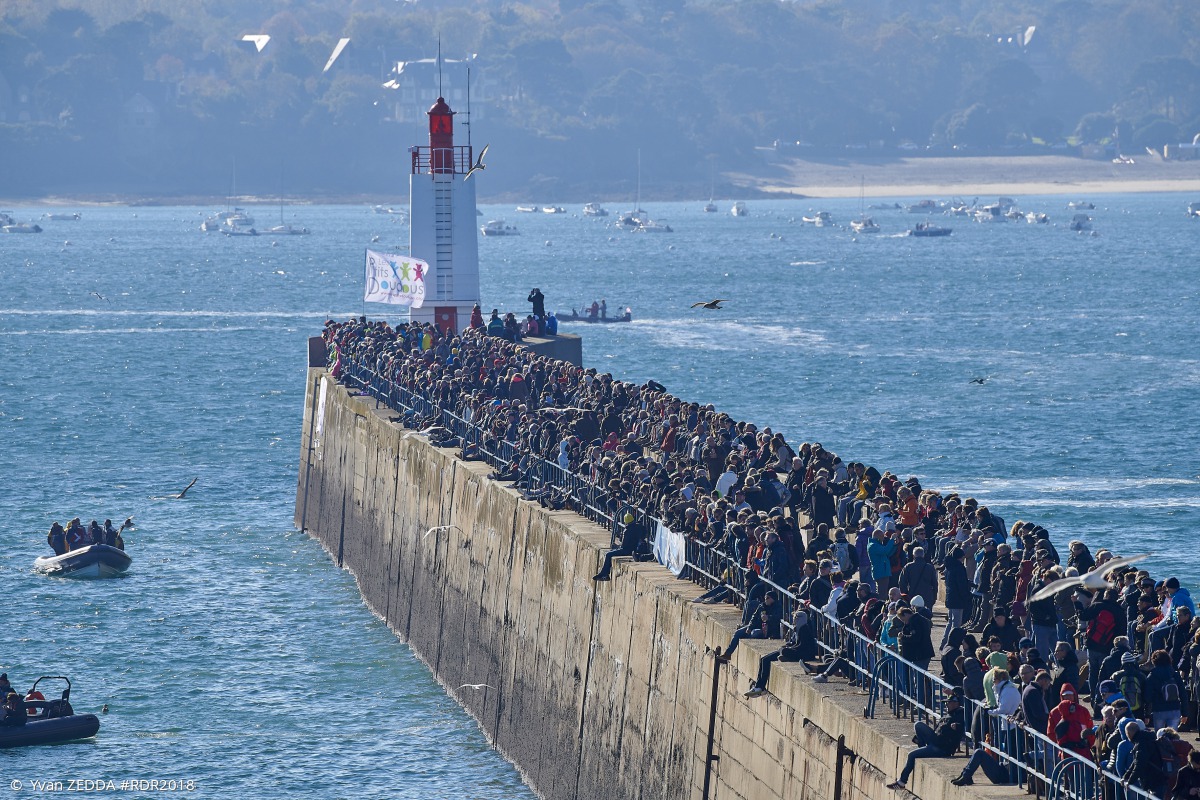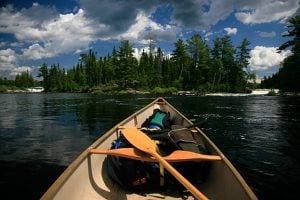
Exploration
Team Canada Adventure comes home 2nd in ‘World’s Toughest Race’
The team's thoughts on the 2020 Eco-Challenge through Fiji
- 1259 words
- 6 minutes
This article is over 5 years old and may contain outdated information.
Travel
A look at the legendary sailing race from France to Guadeloupe as it celebrates its 40th year

“Le troisieme c’est… c’est Banque Populaire!” says the middle-aged Frenchman next to me as he scans the horizon with his binoculars before dropping them to his chest and pulling his blue knit cap down over the tops of his ears.
I squint into the wind that’s buffeting the top of the tower that caps Fort la Latte, a 14th-century castle perched on a cliff that juts out into the Atlantic Ocean south of Saint-Malo, France, and try to make out the markings on one of the sleek trimarans scudding across the water in the distance, to no avail.
I may not be able to see the rigging or the fibreglass hulls slicing through the ocean as clearly as the rest of the spectators squeezed in against the tower’s parapet — everyone seems to have a pair of binoculars — but there’s still perhaps no better place on land from which to watch one of the most famous sailing races in Europe, if not the world: the Route du Rhum.

This year marks the 40th anniversary of the quadrennial solo transatlantic race, the start of which takes place on the first Sunday in November and sees professional and amateur skippers pilot their boats 5,700 kilometres from Saint-Malo to Pointe-à-Pitre, Guadeloupe, in the French Caribbean. The lead boats are currently more than halfway to the finish line.
Six classes of boat compete in the race, but it’s the “Ultime” category that captures the most attention. The vessels in this class are the largest and fastest in the race, each between 23 metres and 32 metres long and capable of reaching speeds of up to 75 kilometres per hour. In 2014, the Ultime-class boat Banque Populaire set the course record, reaching Guadeloupe in seven days 15 hours eight minutes and 32 seconds. That’s a far cry from the 23 days six hours 59 minutes and 35 seconds it took Canadian Mike Birch to sail his yellow trimaran Olympus Photo to victory in the inaugural race in 1978, beating the second-place boat by just 98 seconds.
The race has grown rapidly since then, with each successive edition attracting ever greater numbers of competitors, visitors and media coverage. This year, 123 boats across all classes are competing (32 more than in 2014), with sailors coming from across France and from countries such as South Africa, the United States, Great Britain, Italy, Finland and Japan. “Some do the race to win,” says Nicolas Le Texier, an amateur sailor who lives in Saint-Malo and has been watching the race his whole life. “Others do it to try and finish in the top three, the top five or the top 10. And others do it just to try and finish.”
This year, about 1.3 million people visited Saint-Malo during the 10-day festival that led up to the start of the race. The town gets so busy, says Le Texier, that the average time to order and be served a beer is between 35-40 minutes. “In France, sailing is not as popular as football, for example, but we still have a huge sailing culture,” he says. “People who have never sailed come from all over the country to watch this race, and they know everything about previous editions — the names of the boats, the names of the skippers. It’s truly a national French event.”

Le Texier says that the first 24 hours of the race are probably the hardest because the boats are near the coast, where rocks and fishing boats can pose hazards. Once the vessels get out of the Gulf of Biscay, however, they pick up tremendous speed and can whip across the Atlantic. “These boats fly,” he says. “The times keep going down, and in the coming years I think it will take them five days to cross.”
And the favourite to take the title this year? “François Gabart, in Macif, I think,” says Le Texier. “Because [he understands that] it’s a like being a couple; it’s not about whether you have a good boat or you’re a good pilot — it’s about the harmony between the two.”

Are you passionate about Canadian geography?
You can support Canadian Geographic in 3 ways:

Exploration
The team's thoughts on the 2020 Eco-Challenge through Fiji

Travel
Inspired by age-old travelways, a new canoe route knits together the Trans Canada Trail

Science & Tech
Des chercheurs surveillent la densité de la glace, les fissures et l’impact de la circulation des camions depuis l’espace

Exploration
An excerpt from The Boundless Life: 13 Lessons Learned the Hard Way